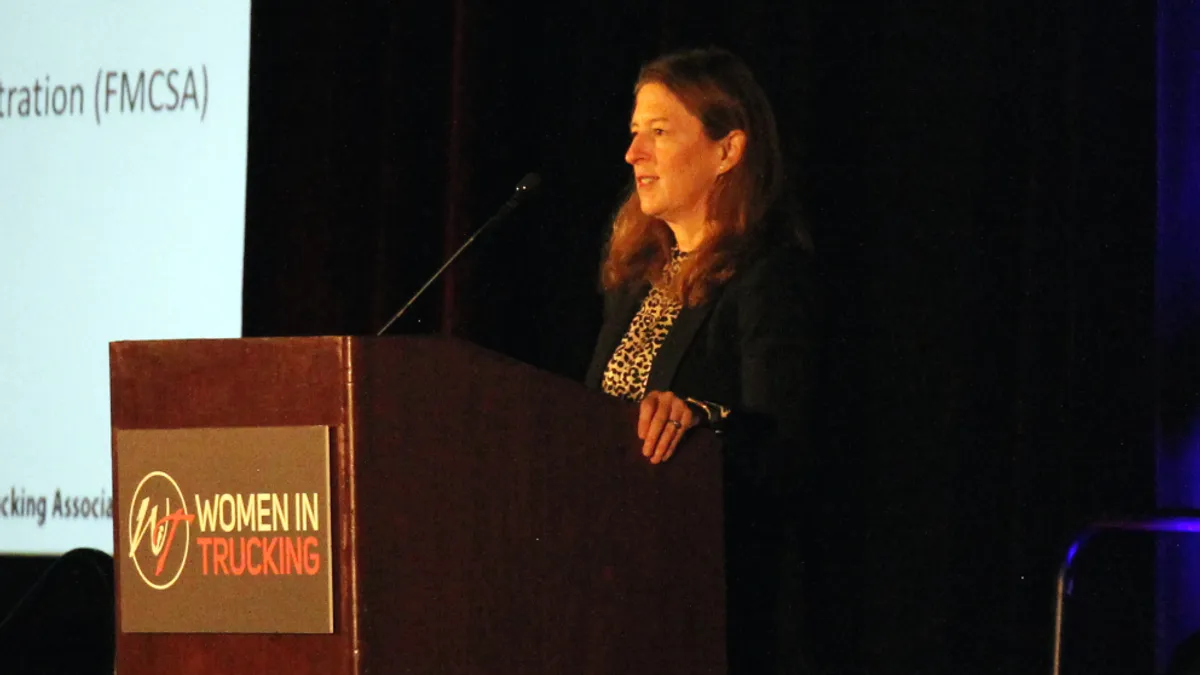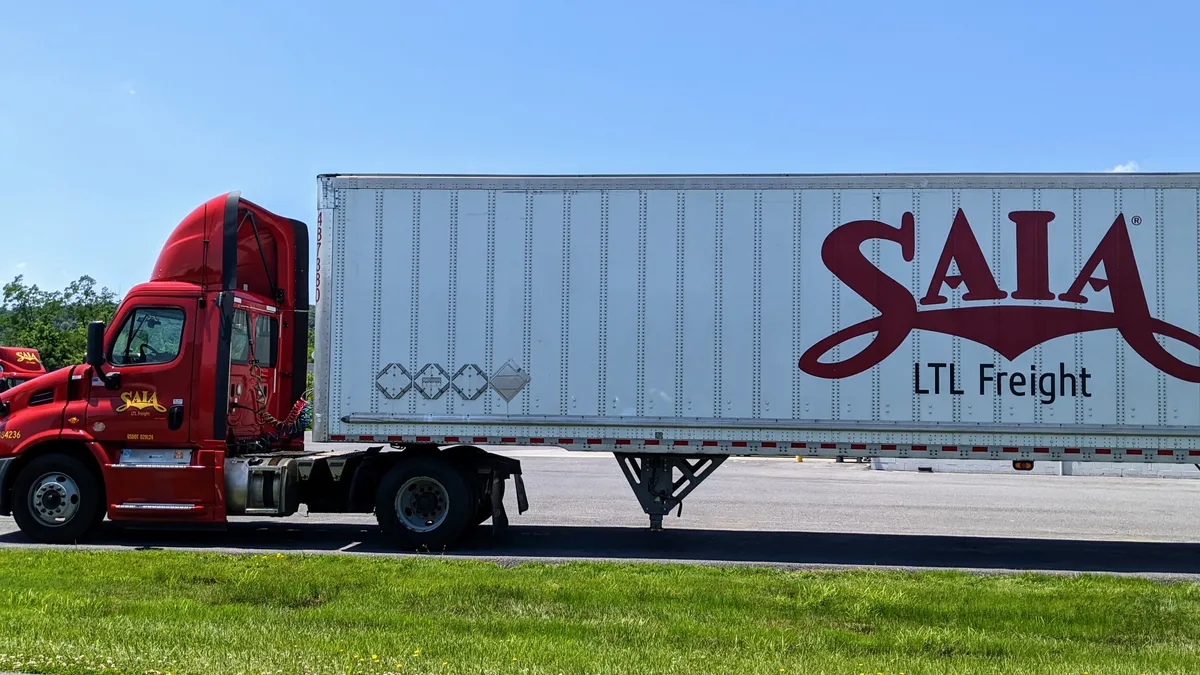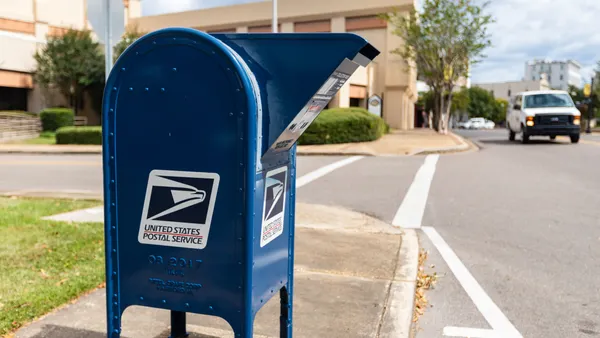DALLAS — FMCSA Administrator Robin Hutcheson spoke Monday to a ballroom full of women trucking professions, who make up just a sliver of their industry.
Hutcheson, the head of the Federal Motor Carrier Safety Administration, addressed the need to fix trucking’s gender disparity at the Women In Trucking Association's Accelerate! Conference & Expo. She noted the importance of equity alongside other priorities involving eliminating traffic fatalities and improving parking facilities to make them safer.
The group of female trucking professionals stood in sharp contrast to the current makeup of the industry. Speaking to that gender disparity, Hutcheson said, "When 57% of the workforce is comprised of women and only 24% in transportation jobs, we have some work to do."
One of the primary issues Hutcheson addressed during her remarks was the Department of Transportation’s mission to bring traffic fatalities to zero. The goal is outlined in the National Roadway Safety Strategy policy plan that was released in January, which she oversaw.
Hutcheson also detailed the department’s use of a framework called the Safe System Approach to guide its safety work, which embraces shared responsibility and the notion that human error is an inextricable part of many crashes.
"[The approach] says that it's never the fault of just one driver or one roadway or one vehicle, we have to create a redundant system that recognizes that humans … make mistakes.”
One of the most serious issues facing women trucking professionals is the prevalence of sexual assault, a problem that Hutcheson said she wants to tackle head-on.
A new federal study provided further evidence of the problem, and the administrator calling the findings “disturbing and unacceptable.” The survey of 548 truckers, including a mix of ethnicities and genders, confirmed that physical, sexual and verbal harassment occurs throughout the industry.
According to the report, women are more likely than men to face sexual harassment while on the job. Survey respondents shared that harassment happens in a variety of settings, including driver training schools, team driving environments and truck stops, in addition to over-radio communications and while driving.
Survey participants offered a variety of suggestions for making the industry safer, including providing more parking facilities and enhancing them with safety features such as better lighting, allowing workers to carry firearms and developing educational materials for companies about harassment.
On parking, Hutcheson noted that work is underway, with new federal grants to add truck parking capacity.
Grant money in Florida and Tennessee, for example, is adding hundreds of spots along interstates. Hutcheson said those two states are examples of what is possible, adding that the FMCSA has instructed every division administrator in each state to expand truck parking there.
"We came to these priorities by listening," she said. "We are here to engage with you, to listen, to hear the issues, and to quickly pivot again to solutions.”












